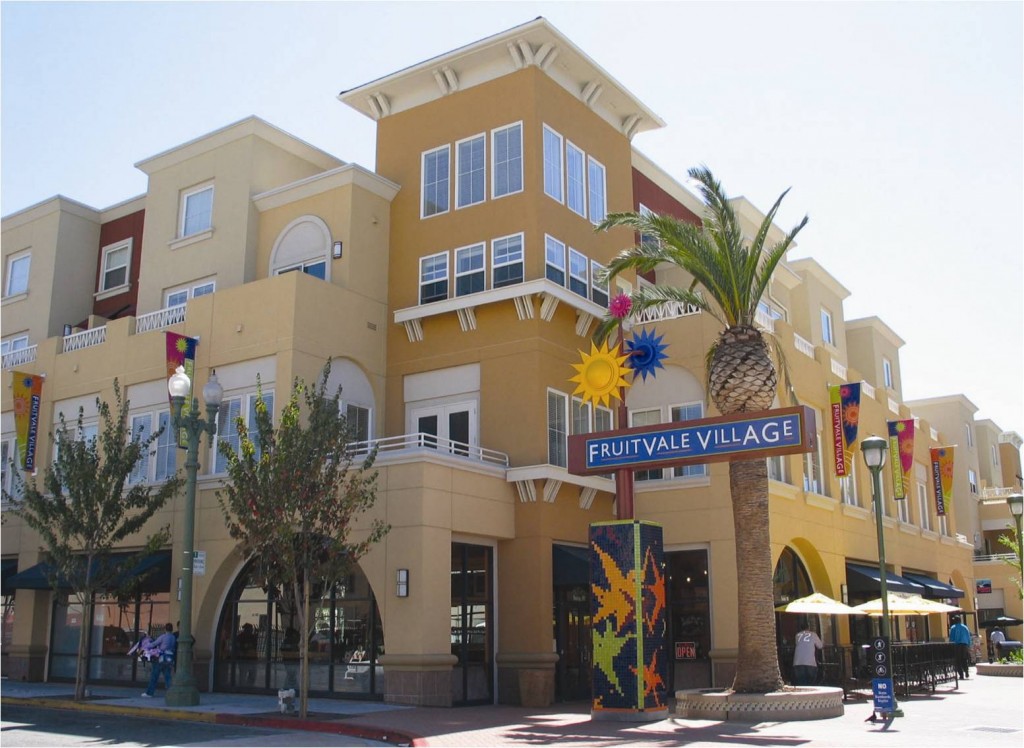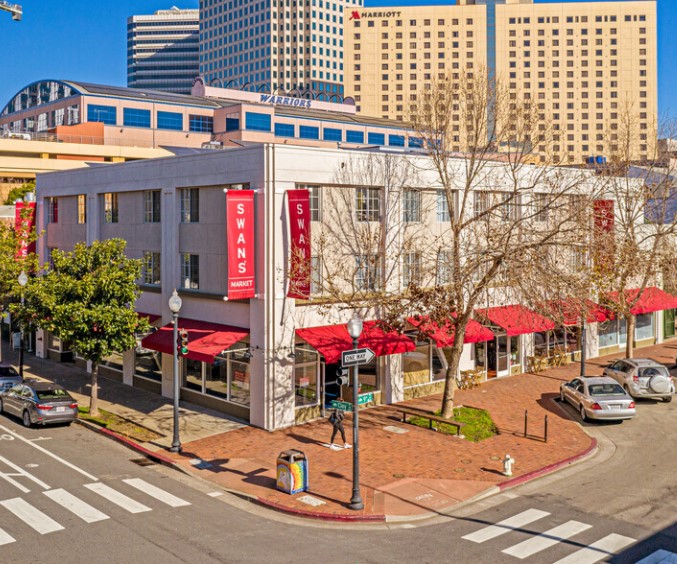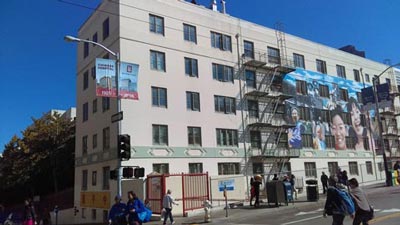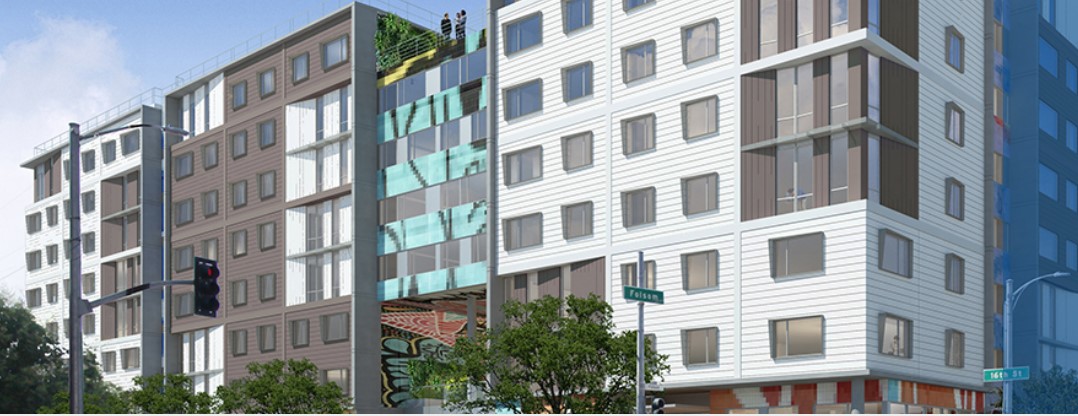Defending CDC Place-Keepers in the Bay Area: Preserving Cultural and Economic Space through COVID-19
Many Community Development Corporations (CDCs) are cultural anchors in their communities. They provide much needed affordable housing, local services, community amenities, and below market rate commercial space for neighborhood-serving businesses and cultural spaces - often owned by women and people of color. During the COVID pandemic, state and local governments enacted many important health and safety mandates to protect the public, and on the flipside these mandates lead many entrepreneurs to accrue insurmountable debt, from loans, back rent and unpaid expenses.
We spoke with the East Bay Asian Local Development Corporation (EBALDC), The Unity Council (TUC), Chinatown Community Development Center (CCDC), and Tenderloin Neighborhood Development Corporation (TNDC) about the short and long term challenges that CDCs and the communities they support are facing, and how to support them into a better recovery.
What roles do CDCs play in local economies, and what changed during the COVID crisis?
EBALDC: Local CDCs are vital to safeguarding and creating the spaces integral to healthy, vibrant, and equitable neighborhoods and cultural business districts such as the Fruitvale Transit Village, Swan’s Market and San Francisco and Oakland Chinatowns. These cultural neighborhoods are supported by CDCs who provide affordable commercial and cultural spaces that are essential to supporting low income families and entrepreneurs, especially in neighborhoods with rising rents and property values.
 CDCs are also community anchors. We have been vital to the survival of Black, Indigenous, and People of Color (BIPOC) businesses, especially during COVID. We rolled-up our sleeves to provide emergency response programs throughout the pandemic that included: meal distributions, outreach and support to small businesses, emergency rent relief and deferment, distributing Personal Protective Equipment (PPE), helping businesses re-adapt to evolving COVID guidance, and offered COVID-19 testing and now vaccinations. For many of us, these lines of service were new, particularly providing direct small business assistance. Nonetheless, in a time of crisis, many members of the community and our small business tenants turned to us, the local institutions they knew and trusted. It became clear how critical CDCs are to their survival.
CDCs are also community anchors. We have been vital to the survival of Black, Indigenous, and People of Color (BIPOC) businesses, especially during COVID. We rolled-up our sleeves to provide emergency response programs throughout the pandemic that included: meal distributions, outreach and support to small businesses, emergency rent relief and deferment, distributing Personal Protective Equipment (PPE), helping businesses re-adapt to evolving COVID guidance, and offered COVID-19 testing and now vaccinations. For many of us, these lines of service were new, particularly providing direct small business assistance. Nonetheless, in a time of crisis, many members of the community and our small business tenants turned to us, the local institutions they knew and trusted. It became clear how critical CDCs are to their survival.
So far, our collective efforts and financial support prevented many business closures. Within this group we have seen only a 5% closure rate for our largely BIPOC small business tenants vs. the estimated 34% nationally for BIPOC small businesses.
TUC: CDCs stretched their capacity and diverted resources from our core operations to support our tenants. Our business models pivoted to meet immediate critical needs, and now we are planning for longer term recovery.
What are the short- and long-term consequences of COVID-related challenges for CDCs and the communities they support?
EBALDC: Collectively, the CDCs interviewed have seen up to a 40% sustained decline in rent collections and are projecting $5MM in total rent losses through the end of 2021—and we anticipate these losses to continue. These steep losses of rent revenue, along with an uptick in COVID-related health and safety expenses (even as people are getting vaccinated) generate a cascade of financial challenges. CDCs have been forced to defer our own loan payments; draw down existing reserves; limit future reserve deposits for needed capital improvements and emergency repairs; and make substantial advances from corporate reserves. This puts CDCs and the community programming, affordable housing, and cultural place-keeping that we support in jeopardy.
Collectively, the CDCs interviewed have seen up to a 40% sustained decline in rent collections and are projecting $5MM in total rent losses through the end of 2021—and we anticipate these losses to continue. These steep losses of rent revenue, along with an uptick in COVID-related health and safety expenses (even as people are getting vaccinated) generate a cascade of financial challenges. CDCs have been forced to defer our own loan payments; draw down existing reserves; limit future reserve deposits for needed capital improvements and emergency repairs; and make substantial advances from corporate reserves. This puts CDCs and the community programming, affordable housing, and cultural place-keeping that we support in jeopardy.
CCDC: The vast majority of our BIPOC commercial tenants have endured great strains. Many have used multiple resources available to them: savings; loans from friends and family; PPP loans. There is still great concern as to what recovery will look like, especially in our communities, which already have a history of adversity and neglect.
Our communities are at risk. If we cannot activate our commercial spaces in partnership with small business owners, our residential communities will see the impact in the form of blight and neglect. In order for CDCs to continue providing the needed affordable community services, we will need support for lost rental income and new programs deployed.
What should we know about the relationship between the commercial and residential sides of CDC portfolios in thinking about solutions?
 CCDC: There are important ties between our residential and commercial spaces. In mixed-use affordable housing developments, commercial tenants activate spaces by; creating opportunities to generate economic activity, provide needed services, and create a welcoming environment for families, children and seniors. Additionally, the rental revenue from commercial tenants is critical for balancing the operating budget of affordable housing, and can make the difference in whether an affordable housing development can run effectively. When commercial revenue declines so much that a property is running at a loss, CDCs must make difficult decisions on how best to adequately continue supporting residents.
CCDC: There are important ties between our residential and commercial spaces. In mixed-use affordable housing developments, commercial tenants activate spaces by; creating opportunities to generate economic activity, provide needed services, and create a welcoming environment for families, children and seniors. Additionally, the rental revenue from commercial tenants is critical for balancing the operating budget of affordable housing, and can make the difference in whether an affordable housing development can run effectively. When commercial revenue declines so much that a property is running at a loss, CDCs must make difficult decisions on how best to adequately continue supporting residents.
TUC: In the BIPOC communities that we serve, both the commercial and residential portfolios are an important part of the community ecosystem and together create the strength and vibrancy of the community. An inclusive recovery in the communities we serve will take an intentional and significant investment, fully engaged partners and a shift to holistic strategies that build and scale programs to support small business, workforce development, and financial services.
What roles can local and state governments play in fostering solutions? What about community development funders and intermediaries?
TNDC: State and local governments can make immediate impacts on the financial health of non-profit, mission aligned commercial landlords still weathering the effects of COVID-19. State resources must be secured and allocated to offset the revenue loss that we sustained from deferring rent for our small, largely BIPOC, commercial tenants. Current efforts like AB 1146- California Small Business Rent Relief Act, would provide a 3 year tax credit to small business landlords that could help mitigate some of our losses, but enhancements are needed.
immediate impacts on the financial health of non-profit, mission aligned commercial landlords still weathering the effects of COVID-19. State resources must be secured and allocated to offset the revenue loss that we sustained from deferring rent for our small, largely BIPOC, commercial tenants. Current efforts like AB 1146- California Small Business Rent Relief Act, would provide a 3 year tax credit to small business landlords that could help mitigate some of our losses, but enhancements are needed.
In addition, CDCs need a fund similar to the residential rent relief offered under SB 91. The fund would need to go further by stabilizing not only the non-profit landlords of cultural and commercial spaces, but also the commercial tenants of those spaces.
Finally, state funds could be used to back-stop losses for local residual receipts payments on soft loans enabling non-profits to retain these payments without negatively impacting local jurisdiction budgets. Non-profits could then use the funds retained from properties in their portfolio that are performing well to support high mission, but underperforming properties.
To better support CDC landlords, what should the community development field be focusing on as we emerge from the COVID-19 crisis?
TUC: CDCs have raised corporate and philanthropic dollars to develop small business and tenant support programs. The robust and immediate response CDC’s have implemented since the pandemic will need to continue and grow in order to protect and preserve the culture and vibrancy of the neighborhoods we serve. The recovery will be long, and community programs will be necessary to ensure our BIPOC small business community is here for years to come.
During the pandemic, we’ve seen an increase in collective impact work, CDCs and partners coming together to solve big issues in support of our communities. It is imperative that we begin to develop long-term strategies to ensure the health and maintenance of our community real estate assets. Strategies that are developed in partnership with the lending institutions, local, state and federal government. Without a robust response from all sectors we are facing a slow recovery, diminished community assets and the destabilization of the community asset and the CDC.
EBALDC: There is an urgent, unmet need that exists among non-profit CDCs that own and operate cultural and economic space in Bay Area communities. The impact to mission driven, community serving small business landlords remains an under the radar issue, and therefore policy and related COVID-directed resources have not been targeted toward relief in this sector. Immediate financial support for CDCs is needed to offset the economic impact of COVID-19 that threatens both our short and long term organizational operations and, relatedly, the largely low income, BIPOC communities we serve who have suffered severe and catastrophic impacts as a result of the pandemic.
Without a significant intervention, the people and places CDCs support are at risk both now, and for years to come, of vanishing, small local BIPOC businesses; increased market instability; pervasive unemployment; empty storefronts; further commercial corridor corporatization and insolvent, and deteriorating community assets. Alternatively, CDCs can emerge from this crisis and continue to do what we have done for decades: create and safeguard the spaces integral to healthy, vibrant, and equitable neighborhoods, and be ready to combat the next crisis.